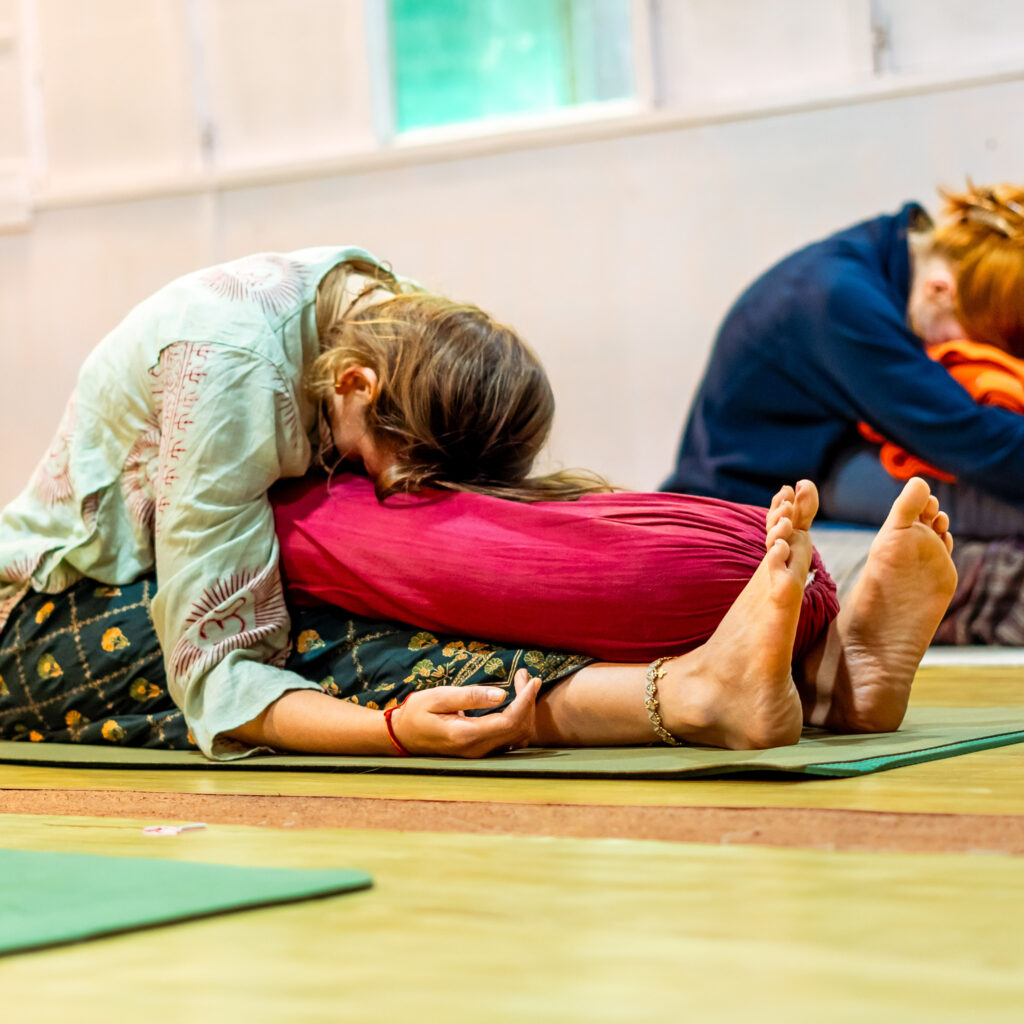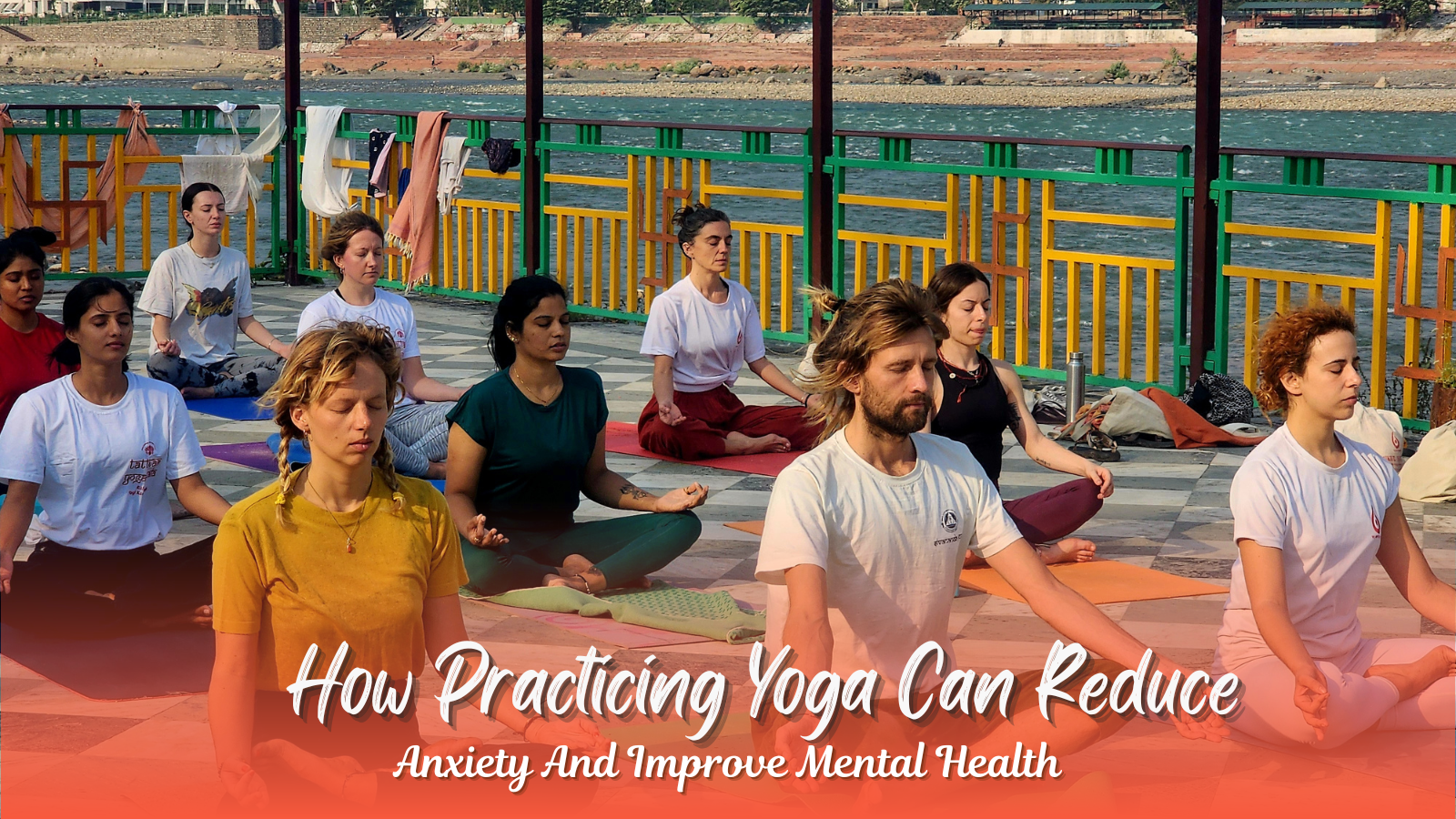In recent years, yoga has become a prominent practice for supporting mental wellbeing. Even practitioners of Western medicine acknowledge the benefits of yoga therapy. Anxiety, a common experience rooted in fear and worry, can significantly impact our lives. Fortunately, yoga offers powerful tools for managing anxiety and fostering inner peace. This ancient practice, now more accessible than ever, can be explored at traditional yoga schools in India, particularly in Rishikesh, the world capital of yoga. At a Yoga School in India like Gurukul Yogashala, you can learn how to practice yoga to alleviate anxiety and improve your overall mental health. Let’s explore how.
Anxiety Disorders and Their Impact
Anxiety is a natural response to stress, but when it becomes overwhelming and persistent, it can develop into an anxiety disorder. While some anxiety can be adaptive, helping us prepare for challenges, chronic anxiety can be debilitating. Approximately 30% of adults experience an anxiety disorder at some point in their lives. Yoga therapy, a form of mind-body practice, can be a valuable tool in managing these conditions. Understanding different types of anxiety disorders can help us recognize symptoms and suggest appropriate practices.
Here are a few common anxiety disorders:
- Generalized Anxiety Disorder (GAD): Characterized by excessive worry and tension, often accompanied by restlessness, fatigue, and difficulty concentrating. Worries typically center around everyday concerns like family, work, or health.
- Panic Disorder: Involves recurrent panic attacks, sudden episodes of intense fear accompanied by physical symptoms such as sweating, shortness of breath, dizziness, nausea, chest pain, and a feeling of losing control.
- Phobias: Intense, irrational fears of specific objects or situations (e.g., heights, spiders, enclosed spaces). Phobias can lead to avoidance behaviors that significantly disrupt daily life.
These disorders can stem from various factors, including psychological, genetic, environmental, and developmental influences. Yoga therapy, often used in conjunction with psychotherapy, offers a holistic approach to managing anxiety.

How Practice Yoga Supports Mental Wellbeing
Yoga, as a mind-body practice, connects our thoughts, emotions, and physical sensations. This connection is key to addressing anxiety. Through physical postures (asanas), breathing techniques (pranayama), and meditation, yoga helps us:
- Regulate the Nervous System: Yoga practices can shift the nervous system from a state of “fight-or-flight” (sympathetic dominance) to a state of “rest-and-digest” (parasympathetic dominance), promoting relaxation and reducing anxiety.
- Increase Body Awareness: Yoga cultivates present moment awareness, helping us notice physical sensations and emotional states without judgment. This increased awareness can help us recognize and manage anxiety symptoms more effectively.
- Develop Coping Mechanisms: By practicing yoga, we develop tools for managing stress and anxiety, such as deep breathing, mindfulness, and self-soothing techniques.
If you’re wondering how long should you practice yoga before teacher training, it’s beneficial to establish a consistent personal practice first. This will give you a deeper understanding of the practice before you undertake formal training at a Yoga School in India.
Yoga Poses for Anxiety Relief
Several yoga poses are particularly helpful for managing anxiety:
- Camel Pose (Ustrasana): This backbend stretches the front of the body, strengthens the back and spine, and opens the chest, facilitating deeper breathing and releasing emotional blockages.
- Bow Pose (Dhanurasana): This pose strengthens the back and core, opens the chest, and can help release nervous energy. It’s important to learn proper alignment to avoid injury, which you can do at a 200 hour yoga teacher training course in Rishikesh.
- Child’s Pose (Balasana): A restorative pose that promotes a sense of grounding and calm, releasing tension in the spine and calming the nervous system.
- Corpse Pose (Savasana): A deeply relaxing pose practiced at the end of a yoga session. Savasana encourages complete relaxation and can be a powerful meditative practice.
These poses, and many others, are taught in detail at schools offering Best Yoga Teacher Training in Rishikesh.
Pranayama (Breathing Techniques) for Mental Health
Pranayama, the practice of breath control, is a fundamental aspect of yoga that can significantly impact mental wellbeing.
- Yogic Breathing (Dirga Pranayama): Also known as three-part breath, this technique involves consciously filling the abdomen, rib cage, and chest with breath, promoting full lung capacity and calming the nervous system.
- Bee’s Breath (Bhramari Pranayama): This technique involves making a gentle humming sound on the exhale, which can calm the mind and reduce anxiety.
- Alternate Nostril Breathing (Nadi Shodhana Pranayama): This practice balances the energy flow in the body and calms the mind, reducing stress and promoting mental clarity.
These pranayama techniques are taught in detail during a 300 Hour Yoga Teacher Training in Rishikesh and 500 Hour Yoga Teacher Training in Rishikesh.
Integrating Yoga into Your Life
If you’re interested in learning how to practice yoga and deepening your understanding of its therapeutic benefits, consider the following:
- Find a Qualified Teacher or Practice Yoga Studio: Look for a certified yoga instructor who has experience working with students with anxiety.
- Start Slowly and Gradually Increase Your Practice: Begin with shorter sessions and gradually increase the duration and intensity as you become more comfortable.
- Be Consistent: Regular practice is key to experiencing the full benefits of yoga. How often should you practice yoga? Aim for at least a few times a week.
- Explore Different Styles: Different styles of yoga, such as Yin practice yoga or Ashtanga Yoga Teacher Training in Rishikesh (including 200 Hour Ashtanga Yoga Teacher Training in Rishikesh), may be more suitable for managing anxiety.
- Consider Yoga Teacher Training: If you wish to deepen your practice and potentially share it with others, consider enrolling in a 300 hour yoga teacher training course in Rishikesh or similar programs. This training will give you a comprehensive understanding of how to practice yoga safely and effectively. It will also answer questions like how long should you practice yoga before teacher training.
Is Yoga a Spiritual Practice?
While yoga has roots in spiritual traditions, it can be practiced with or without a spiritual focus. The physical postures and breathing techniques offer tangible benefits for physical and mental health, regardless of one’s spiritual beliefs. Some people find that their yoga practice deepens their connection to themselves and the world around them, while others focus primarily on the physical and mental health benefits.
Final Thoughts
Yoga offers a powerful and holistic approach to managing anxiety and promoting mental wellbeing. Whether you are looking to begin your personal practice or seeking a more in-depth experience through programs like a 200-hour yoga teacher training course in Rishikesh, Gurukul Yogashala and other reputable Yoga Schools in India offer a supportive environment to explore the transformative potential of yoga.


